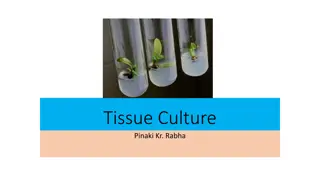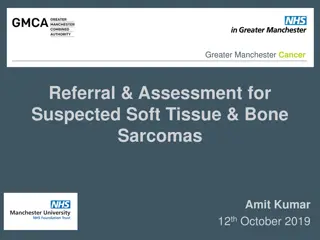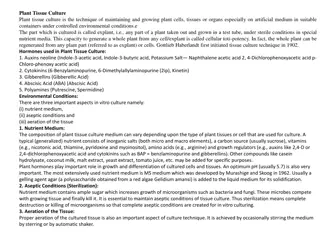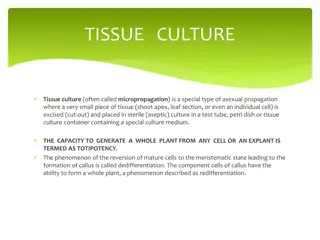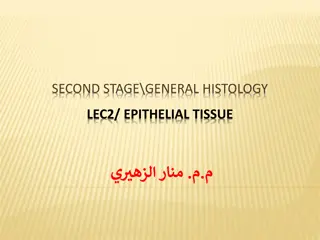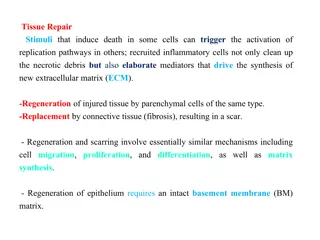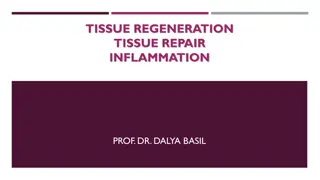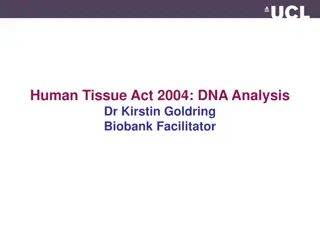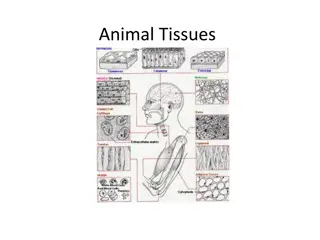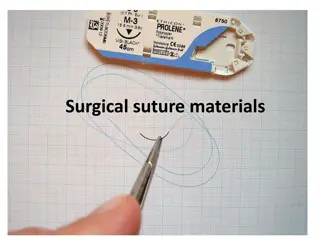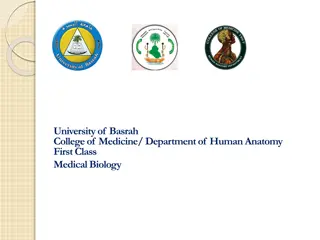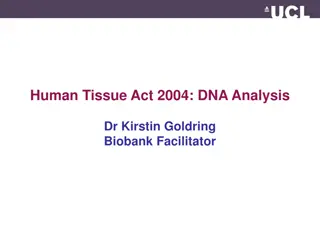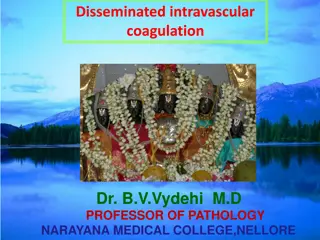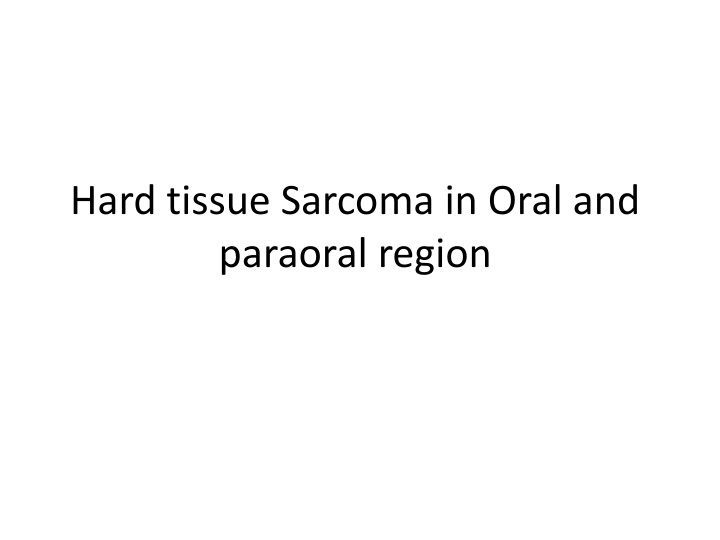
Sure, based on the provided content: "Soft Tissue Sarcomas in Oral Cavity: Overview and Radiographic Findings
"Learn about soft tissue sarcomas in the oral cavity, including osteosarcoma, their characteristics, common symptoms, and radiographic findings. Discover insights on diagnosis and management of these rare tumors affecting the maxilla and mandible."
Download Presentation

Please find below an Image/Link to download the presentation.
The content on the website is provided AS IS for your information and personal use only. It may not be sold, licensed, or shared on other websites without obtaining consent from the author. If you encounter any issues during the download, it is possible that the publisher has removed the file from their server.
You are allowed to download the files provided on this website for personal or commercial use, subject to the condition that they are used lawfully. All files are the property of their respective owners.
The content on the website is provided AS IS for your information and personal use only. It may not be sold, licensed, or shared on other websites without obtaining consent from the author.
E N D
Presentation Transcript
Hard tissue Sarcoma in Oral and paraoral region
53/8 35 23/1 15 23/1 15 100 65 53/8 % ( 23/1 ) % . 23/1 )% (
Soft Tissue Sarcomas of Oral Cavity OSTEOSARCOMA SARCOMA) Osteosarcoma is a malignancy of mesenchymal cellsthat have the ability to produce immature bone. hematopoietic osteosarcomais the most common type of malignancy to originate within bone. The majority of osteosarcomas intramedullary origin, but a small number may bejuxtacortical or rarely extraskeletal. (OSTEOGENIC osteoid Excluding neoplasms, or demonstrate
9300 1366 1395 9300 1395 1366 30 24 25 19 20 15 15 11 9 10 4 5 3 2 1 1 1 1 0 0 0 0
Soft Tissue Sarcomas of Oral Cavity Osteosarcomas of the jaws are uncommon and represent 6% to 8% of all osteosarcomas. These gnathictumors have been diagnosed in patients ranging young children to the elderly, but they occur most often in the third and fourth decades of life. The mean age for patients with osteosarcoma of the jaw is which is 10 to 15 years older than the mean age for osteosarcomas of the long bones. As is seen in extragnathic locations, a slight male predominance is noted. from about 33 years,
Soft Tissue Sarcomas of Oral Cavity The maxilla and mandible are involved with about equal frequency. Mandibular tumors arise more frequently in the posterior body and horizontal ramus rather than the ascending ramus. Maxillary lesions are discovered more commonly in the inferior portion (alveolar ridge, sinus floor, palate) than the superior aspects (zygoma, orbital rim).
Soft Tissue Sarcomas of Oral Cavity Swelling and pain are the most common symptoms Loosening of teeth, paresthesia, and nasal obstruction (in the case of maxillary tumors) also may be noted. Some patients report symptoms for relatively long periods before diagnosis, which indicates that some osteosarcomas of the jaws grow rather slowly .
Soft Tissue Sarcomas of Oral Cavity The radiographic findings vary from to a mixed sclerotic and radiolucent lesion to an entirely radiolucent process. The peripheral border of the lesion is usually ill- defined and indistinct, making it determine the extent of radiographically. In some cases, an extensive osteosarcoma minimal and subtle radiographic change with only slight variation in the trabecular pattern. Occasionally, there is resorption of the roots of teeth involved by the This feature is often described as "spiking" resorption as a result of the tapered narrowing of the root. dense sclerosis difficult to the tumor may show only tumor.
Soft Tissue Sarcomas of Oral Cavity SUNBURST or SUN RAY The "classic appearance caused by osteophytic bone production on the surface of the lesion is about 25 % of jaw osteosarcomas. Often, this is appreciated best on an occlusal projection. noted in
Soft Tissue Sarcomas of Oral Cavity An important early radiographic change in patients with osteosarcoma consists of a symmetric widening of the periodontal ligament space around a tooth or teeth. This is the result of tumor infiltration along the periodontal ligament space Widening of the p.eriodontal ligament space is not specific for osteosarcoma and may be seen associated with other malignancies. This radiographic finding, when by pain or discomfort and other minimal radiographic changes, may be of great importance in the early diagnosis of jaw osteosarcomas. several accompanied
Soft Tissue Sarcomas of Oral Cavity Histopathologic Features Osteosarcomas of the jaws display considerable histologic variability. The essential microscopic criterion is the direct production of osteoid by malignant mesenchymal cells. In addition to osteoid, the cells of the tumor may produce chondroid material and fibrous connective tissue. The tumor cells may vary from relatively uniform round or spindle-shaped cells to highly Pleomorphic.
Osteogenic Sarcoma Here is an osteosarcoma showing both buccal and lingual expansion of the mandible. The expansion was hard and the patient complained only of pain. The clinical features are obviously non-specific .
Osteogenic Sarcoma Osteogenic Sarcoma In this osteosarcoma there is pronounced clinical swelling; view the radiograph in the next image.
Osteogenic Sarcoma The radiograph shows remarkably little change except for a diffuse opacity in the bicuspid area. Malignant jaw tumors are notorious for showing subtle radiographic findings in the face of extensive disease.
Osteogenic Sarcoma Here is another osteosarcoma characterized by diffuse opacity distal to the molar tooth. The patient presented complaining of pain, and it would certainly be easy to mistake this malignancy for an inflammatory condition involving the fully crowned tooth. The degree of opacity is dependent upon the amount of mineralized bone produced by the tumor. Osteosarcomas are not necessarily radiopaque.
Osteogenic Sarcoma In some instances, the earliest radiographic feature represents peculiar widening of the periodontal ligament space. This 36 year-old female had slow swelling for the past four months and only minimal loosening of the involved teeth. (Certainly, the pattern of bone loss is not typical for periodontal disease.)
Osteogenic Sarcoma Textbooks often describe the typical radiographic feature of osteosarcoma as a "sun ray" effect well illustrated in this image. However, this is, in reality, an uncommon finding and is often seen in late or extensive disease. This particular example shows the sunray pattern with radiating bone spicules plus a large mottled opaque-lucent lesion in the posterior aspect.
Osteogenic Sarcoma Some osteosarcomas may even display a moderately well demarcated border. In this particular example of such a tumor occurring at the midline of the palate, the posterior border appears to be sharp and, although the lesion is predominantly radiolucent, one can identify globular opacities.
Osteogenic Sarcoma This 21 year-old female presented complaining of pain and swelling in the molar area. The molar teeth tested non-vital and radiographs reveal a diffuse opacity involving the maxillary sinus, widening of the mesial periodontal ligament space on the second molar and evidence of possible root resorption of the first molar. (This patient continues in the next image).
Osteogenic Sarcoma The second molar was extracted and the socket appeared to be filling in nicely; however, her symptoms continued. The first molar was then extracted and eventually a biopsy revealed osteosarcoma. The delay in diagnosis characteristic of this case is a common situation in jaw malignancies. The teeth test non-vital because of nerve destruction by tumor rather than because the teeth are dead. Also, the radiographic findings are quite subtle and are mistaken for inflammatory disease. Extraction sites in malignant tumors often appear to heal rapidly because they fill quickly with proliferating malignancy.
Osteogenic Sarcoma The microscopic appearance of osteosarcoma consists of malignant fibrous connective tissue stroma producing abnormal bone. In this case, the stroma is loose but the cells are malignant and there is considerable heavily mineralized osseous tissue being formed.
Osteogenic Sarcoma Here is another osteosarcoma showing spindling malignant fibrous stroma with formation of poorly calcified, markedly irregular bone trabeculae.
Osteogenic Sarcoma Some osteosarcomas display cartilage formation. The cartilage is readily visible but there are darkly calcified bone trabeculae at one corner. View a higher magnification of this area in the next image.
Osteogenic Sarcoma Higher magnification of this area shows that bone is being formed directly from malignant stroma; therefore, the tumor is best classified as osteosarcoma
Osteogenic Sarcoma In some instances, the tumor is composed of densely packed poorly differentiated malignant cells and a minimal quantity of poorly calcified bone which is sometimes difficult for the pathologist to detect.
Soft Tissue Sarcomas of Oral Cavity CHONDROSARCOMA Chondrosarcoma is a malignant tumor characterized by the formation of cartilage, but not bone, by the tumor cells. Chondrosarcomas comprise about 10% of all primary tumors of the considered by most authorities to involve the jaws only rarely. when occurring in the head chondrosarcomas arise most frequently in the maxilla; sites of involvement are the mandibular body, ramus, nasal septum, and paranasal sinuses. skeleton but are and neck less common
Soft Tissue Sarcomas of Oral Cavity A painless mass or swelling is the most common presenting sign. This may be associated with loosening of teeth. In contrast to osteosarcoma, an unusual complaint. Maxillary tumors may cause nasal obstruction, congestion, epistaxis, photophobia, or visual loss. separation or pain is
9300 1366 1395 9300 1395 1366 30 24 25 19 20 15 15 11 9 10 4 5 3 2 1 1 1 1 0 0 0 0
Soft Tissue Sarcomas of Oral Cavity Radiographically, the tumor usually shows features suggestive of a malignancy, consisting of a radiolucent process with poorly defined borders. The radiolucent area often contains scattered and variable amounts of radiopaque foci, which are caused by calcification or ossification of the cartilage matrix.
Soft Tissue Sarcomas of Oral Cavity Histopathologic Features Chondrosarcomas are composed of varying degrees of cellularity. In most cases, typical lacunar formation within the chondroid matrix is visible, although this feature may be poorly differentiated tumors. Chondrosarcomas may be divided into three histopathologic grades of malignancy. This grading correlates well with the rate of tumor growth and prognosis for chondrosarcomas of the extragnathic skeleton. cartilage showing maturation and scarce in system
Soft Tissue Sarcomas of Oral Cavity Treatment and Prognosis The prognosis for chondrosarcoma is related to the location, and grade of the lesion. The most is the location of the tumor because this has the greatest influence on the ability to achieve complete resection. The most effective chondrosarcoma is radical surgical excision. Radiation and chemotherapy are less when compared with osteosarcoma and used for unresectable high-grade chondrosarcomas. size, important factor treatment for effective are primarily
Soft Tissue Sarcomas of Oral Cavity MULTIPLE MYELOMA of plasma cell origin within bone. The unknown, although sometimes a plasmacytoma makes up about I % of all 15% of hematologic malignancies. If metastatic is excluded, multiple myeloma accounts for nearly 50% of all malignancies that involve the bone. More than 13,000 cases are The abnormal plasma cells that are typically monoclonal. The abnormal cells probably arise from a single malignant precursor that has undergone uncontrolled mitotic division and has spread throughout the body. Because the from a single cell, all the daughter cells that compose lesional tissue have the same genetic makeup and produce the same proteins. Multiple myeloma is a relatively uncommon malignancy origin that often appears to have a multicentric cause of the condition is may evolve into multiple myeloma. This disease malignancies and 10% to disease diagnosed annually in the United States. compose this tumor neoplasm develops the
9300 1366 1395 9300 1395 1366 30 24 25 19 20 15 15 11 9 10 4 5 3 2 1 1 1 1 0 0 0 0
Soft Tissue Sarcomas of Oral Cavity Clinical and Radiographic Features Multiple myeloma is typically a disease of adults, with men being affected slightly more often than women. The median age at diagnosis is between diagnosed before age 40. For reasons that the disease occurs twice as frequently in blacks as whites, making this the most common hematologic malignancy among black persons in the United States. Bone pain is the most characteristic presenting symptom. Some patients caused by tu~or destruction of bone. complain of fatigue as a consequence of myelophthisic anemia. Petechial hemorrhages of the skin and oral mucosa may be seen if platelet production has been affected. Fever may be present as a result of neutropenia with increased susceptibilitv to infection. 60 and 70 years, and it is rarely are not understood, experience pathologic fractures They may also
Soft Tissue Sarcomas of Oral Cavity Radiographically, multiple well- defined, "punched out" radiolucencies or ragged radiolucent lesions may be seen in multiple myeloma. These especially evident on a skull film. Although any bone may be affected, the jaws have been reported to be involved in as many as 30% of cases. The radiolucent areas of the bone contain the abnormal plasma cell proliferations that characterize multiple myeloma. may be
Soft Tissue Sarcomas of Oral Cavity Renal failure may be a presenting sign in these patients because the kidneys become overburdened with excess circulating light chain proteins of the tumor cells. These products, which are found in the urine of 30% to 50% of patients with multiple myeloma, are called Bence Jones proteins, after the who first described them in detail. Some patients with multiple myeloma show deposition of amyloid in various soft tissues of the body, and this may be the initial manifestation of the disease. Amyloid deposits are due to the accumulation of the abnormal light chain proteins. Sites that are classically the light chain British physician
Soft Tissue Sarcomas of Oral Cavity Histopathologic Features Histopathologic examination of the lesional tissue in multiple myeloma shows diffuse, monotonous sheets of neoplastic, variably differentiated, plasmacytoid cells that invade and replace the normal host tissue.
Soft Tissue Sarcomas of Oral Cavity Treatment and Prognosis The treatment of multiple myeloma consists of chemotherapy. The prognosis is considered poor, but younger patients tend to fare better than older ones. A median survival time of about 30 to 36 months can be expected after the onset of symptoms.
Soft Tissue Sarcomas of Oral Cavity PLASMACYTOMA The plasmacytoma is a unifocal, monoclonal, neoplastic proliferation of plasma cells that usually arises bone. Infrequently, it is seen in soft tissue, in which case, the term extramedullary plasmacytoma investigators believe that this lesion represents the least aggressive part of a spectrum of plasma cell neoplasms that extends to multiple myeloma. Therefore, the is important because it may ultimately give rise to the more serious problem of multiple myeloma. within is used. Some plasmacytoma
9300 1366 1395 9300 1395 1366 30 24 25 19 20 15 15 11 9 10 4 5 3 2 1 1 1 1 0 0 0 0
Soft Tissue Sarcomas of Oral Cavity EWING'S SARCOMA Ewing's sarcoma is a distinctive primary malignant tumor of bon~that is composed of small undifferentiated round cells of ncertain histogenesis. Recent studies have provided data showing that most cases of Ewing's sarcoma exhibit features consistent with neuroectodermal origin. In 85% to 90% of the cases, the tumor cells demonstrate a reciprocal translocation between chromosomes II and 22. Ewing's sarcoma constitutes 6% to 8% of all primary malignant bone tumors and represents the third most common osseous neoplasm after osteosarcoma and chondrosarcoma. In addition, extraskeletal examples have been well documented.
Soft Tissue Sarcomas of Oral Cavity The peak prevalence of Ewing's sarcoma is in the second decade of life, with approximately 80% of patients being younger than 20 years of age at the time of diagnosis and 50% of these tumors being detected in the second decade. A slight male predominance is noted. The vast majority of affected patients are white, with blacks almost never developing this tumor. The long bones, pelvis, and ribs are~fected most frequently, but almost any bone can be affected. Jaw involvement is uncommon, with only 1 % to 2 % occurring in the gnathic or craniofacial bones. tissue mass overlying the affected area of the bone Jaw involvement is more common in the mandible than the maxilla. Paresthesia and loosening of teeth are common findings in Ewing's sarcomas of the jaws.
Soft Tissue Sarcomas of Oral Cavity Ewing's sarcoma is composed of small round cells with well- delineated nuclear outlines and ill- borders. The tumor arranged in broad sheets without any distinct pattern. The prognosis for patients with Ewing's sarcoma has improved dramatically in recent years. Formerly, less than 5 % of patients survived more than 5 years. Current treatment, consisting of combined surgery, radiotherapy, and multidrug chemotherapy, has led to 40% to 80% survival rates. defined cellular cells often are
Treatment and Prognosis Treatment usually consists of multidrug chemotherapy with surgery and/or radiotherapy. Systemic chemotherapy typically is indicated, because seemingly localized disease often is associated with occult micrometastasesWith the development of modern multimodal therapy,the prognosis for patients with Ewing sarcoma has improved dramatically in recent decades. Current 5-year survival rates for patients with apparently localized versus metastatic disease at presentation are approximately 70% and 25%, respectively. The presence of metastasis is the most important prognostic factor, and metastasis is evident at initial diagnosis in about 25% of patients. The most common sites of metastasis are the lungs and bones.




